The 2021 Spring BLOG
To whet your interest, we did get out on the road and made stops at Clément and Sylvain Goepp’s in Heiligenstein, Yannick Meckert in Rosheim, Philippe Brand in Ergersheim, Guillaume Edel in Ergersheim, Pierre Weber in Husseren-Les-Châteaux, La Maison Lissner with Bruno and Théo Schloegel in Wolxheim and Gerard Blaess in Marlenheim. On top of that eclectic bunch, we also had a stopover coffee and wine pick up at Patrick Meyer’s in Nothalten, though most of the visit was spent at the kitchen table discussing bees and honey with Mireille Meyer. Another stopover, really a pitstop, was at Christophe Lindenlaub’s in Dorlisheim to grab some 2019 wines and check in with Zoe, the adorable Zoe.
Oh, and we ended up in downtown Mittelbergheim with a morning at Jean-Pierre Rietsch’s and the afternoon at Lucas Rieffel’s.
Not to mention a couple of stops at the atelier of the wood working wizard, David Seltz, in Mittelbergheim.
A single visit to Strasbourg was slotted in, with catch up’s at two of our favourite wineshops on the planet. It’s always refreshing and informative to have a bout of tonic dialogue and the usual dialectics with Jean Walch at Au Fil du Vin Libre on the Quai des Bateliers. Then, just three minutes walk round the corner and you end up at Oenosphere, where Benoit Hecker provides a zen steadiness to the rapid fire, fact based enthusiasm of his staff. The proximity of this wonderfulness makes you think of the cluster of winemakers on Mittelbergheim main street. So much fascinating quality in such a small space.
Ah, some of the wonderful people in the Alsace natural wine movement.
First up, Heiligenstein and Rosheim
The theme of the first day out was definitely Heiligenstein. Visit number one was at the brothers Goepp, on rue de la Montagne, where Clément and Sylvain took over running the domain in 2019. Clément then joined in the visit to Yannick Meckert’s cellar in nearby Rosheim, where Yannick is newly installed since the 2020 harvest. Yannick is from Heiligenstein so that kept this village theme thing going. That’s Yannick and Clément doing their Heiligenstein hug, down at centre bottom
Check the Rosheim main street sign on the grid, bottom left. Directions, official directions to Jean-Marc Dreyer’s place. Putting Rosheim on the world wine map, as we like to shout about.
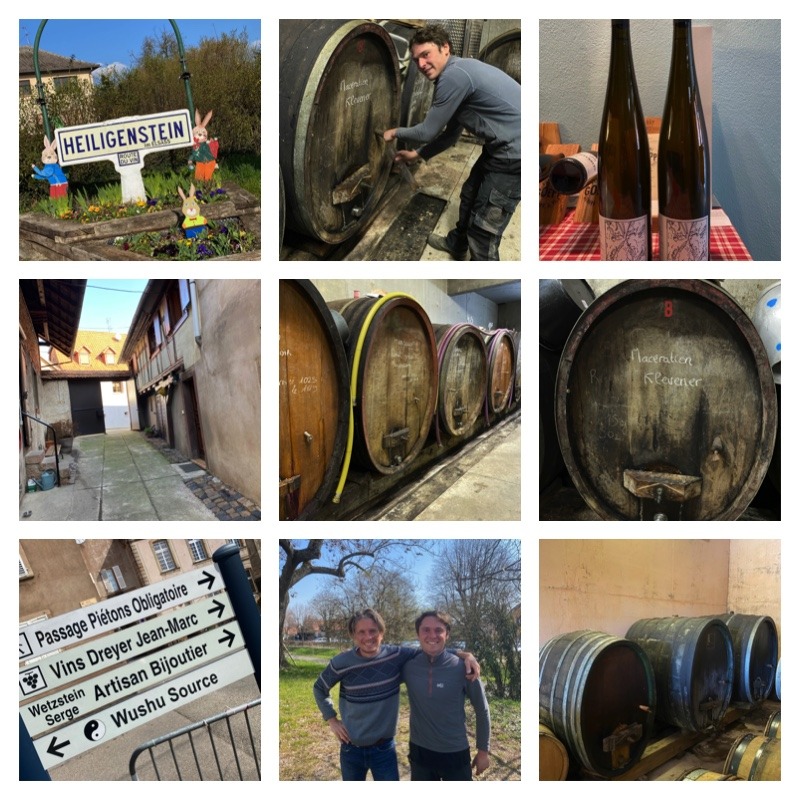
The Goepp domain runs to 11.2 hectares and around 15,000 bottles were produced last year, with a target of 25,000 on the horizon. The vineyards range from Heiligenstein down to Barr, where a patchwork of Riesling and Gewurztraminer parcelles make up two hectares on the Kirchberg de Barr, Grand Cru. Some of the topnotch fruit finds its way to the Auvergne and into the cellar of Patrick Bouju. Keep your eye out for cuvée R from Patrick. Also, a 2019 Tutti Frutti for Les Vins Pirouettes was just finishing up in a foudre and heading for the bottle this spring. This is a 50/50 Gewurztraminer/Pinot Gris mix, with maximum buvabilitie and freshness after 18 months reposing in ancient wood. Back in Alsace will profile the domain in the summer with some emphasis on the Savagnin Rose, Klevener de Heiligenstein niche variety. The 2020 Klevener maceration tasted from the foudre, was gold and clear, dry with good weight, with a lovely complexity of yeasty fruits and a long flinty tram to finish off. That flinty tram, pierre à fusil in french, is typical for the Klevener de Heiligenstein wines.
Yannick Meckert homed in on a facility in Rosheim for the 2020 harvest. With around 18,000 bottles scheduled from the range of foudres and barrels this is a great start, for a start up. Yannick is super independent in his approach, apart from the usual influences in the near vicinity, like Patrick Meyer for instance. He is sourcing his fruit from around Rosheim and down to the mountain vineyards in Reichsfeld. A new initiative just kicked off with some parcelles down in Burgundy. That will be, grown in Burgundy made in Alsace. We plan to profile the domain once we get based Back in Alsace (permanently) from this summer. Yannick brings a big slice of experience back to Alsace, from stints doing wine director restaurant work in Copenhagen, travelling and working on domains in South America, Austria and France of course, where he did a wine making internship with Philippe Pacalet in Burgundy. The range of wines are well thought out with a super serious approach. The Gewurtztraminer maceration from Bernardville’s calcaire soils had these tints of faded roses running into fresh and light tropical fruits. The Pinot Noir from up on the Sollenberg in Reichsfeld is a wine that will develop. From the barrel it had deep griotte cherry tones and was definitely a bit smoky and peppery, but with that edgy quality you get from the Reichsfeld lieux-dites. Bottling for several of Yannick’s wines is going on right now and we plan to visit again in the summer.
And, dropping in at the Goepp’s to pick up some wine a few days later, we ran into the formidable team from Strasbourg’s Cafe des Sports wine bar. Let out for the day on professional tasting business. They were kept in check by the Brothers Goepp, Clément on the left and Sylvain on the right.
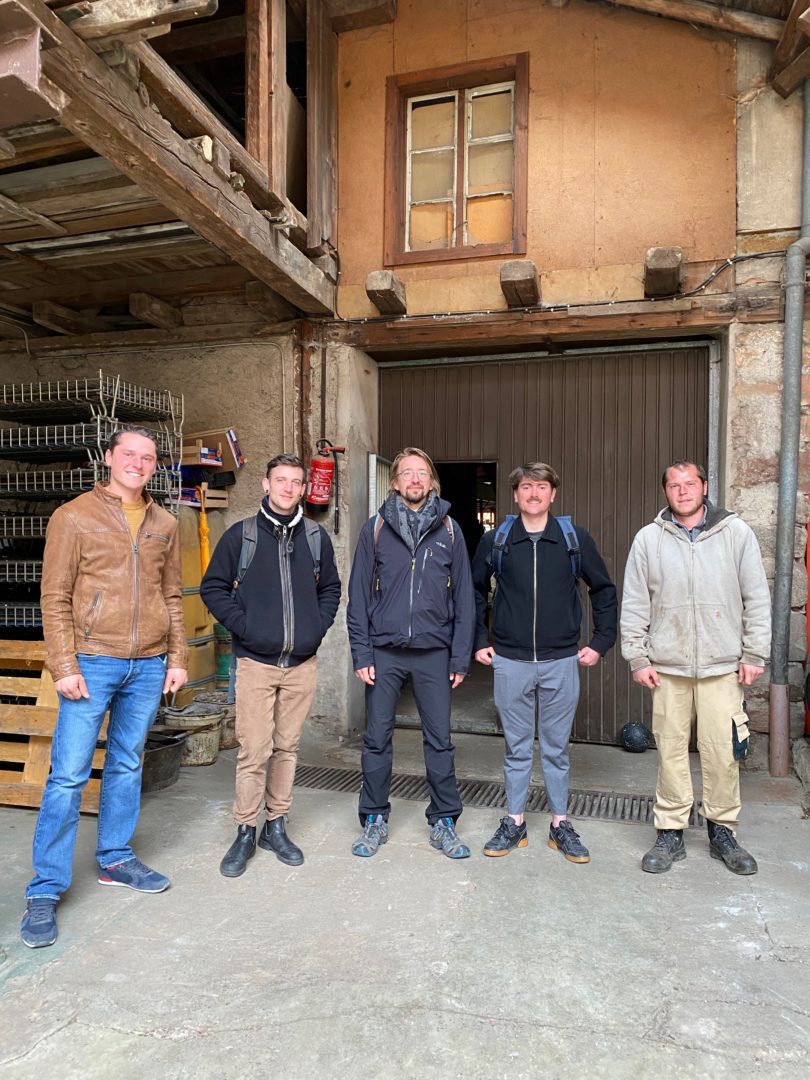
Next up, Ergersheim
With a 10 km Covid lockdown movement restriction from base camp, Ergersheim was just a piece of cake at 9.5 km on the scenic cycle path. We stopped in at Philippe Brand’s on a hectic labelling day, where Guillaume Edel from the Vins Edel Clauss was part of the gang making it all happen. Two days later we went to visit Guillaume.
This was our first visit to Vins Edel Clauss and Guillaume immediately suggested we go and visit the vineyards, where we started in a parcelle of mature Gewurtztraminer (photo top left below). Here was a good example of how the widespread frosts the week before had minimal impact on the late starting season in Alsace. Almost no bud growth, with nothing really going on that could be damaged.
The domain consists of five hectares of vineyards, with a scattering of parcelles around Ergersheim, Wolxheim and on the Bruderthal Grand Cru. Long term minimal intervention in the vineyard, with little or no chemical treatments for several years, provided a good foundation for conversion to organic certification which will happen this year. After taking over the winemaking from his father in 2019, Guillaume got going with the natural wine approach with some influence from Philippe Brand from the same village. Four cuvées were produced in 2019 and the 2020 wines will enlarge the range and this includes a Sylvaner maceration from the Bruderthal. We tasted the 2019’s from the (unlabelled) bottles and the 2020’s from the cuve. Guillaume’s dad joined us for the tasting in the courtyard and provided some strong Alsace opinions, but he was generally (and genuinely) open and supportive to the new direction for the domaine.
Guillaume has jumped into a project with SOMA Wines in Berlin, which includes a collaboration with the LOK6 restaurant. This sort of initiative is dear to our hearts, where winemakers caring for the land make this connection with edgy urban centres. Ergersheim to Berlin, wine gardens to urbanism.
More to come on the domaine later this year. The Sylvaner maceration was a treat. Guillaume explained with 20 days of maceration it went through a fairly rapid fermentation including malolactic. After fermentation, the next step was to settle in an ancient foudre. No idea when bottling might happen as there is still interesting development going on. The wine was dry with a nice weight and roundness, with hints of quince paste and ripe pears, characteristics that we often pick up in these natural wine Sylvaner’s. .
The new labels had just arrived for the naked bottles. Labels designed by William Thurman based in London, who also collaborates with the brother’s Goepp.
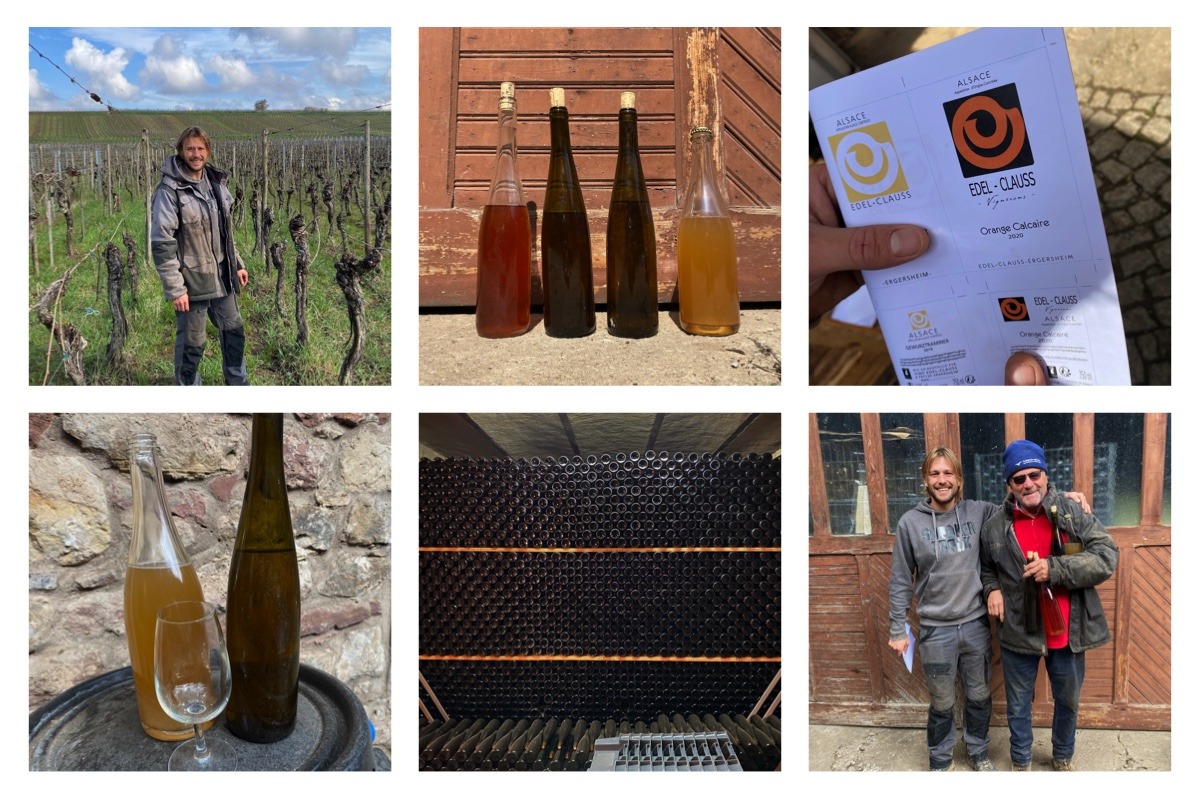
Next stop, Husseren-les-Châteaux
Husseren-les-Châteaux is a small wine village sitting backed up to the Vosges Forest on its west. The village sits above the Eichberg and the Pfersigberg grand crus. This is Bruno Schueller’s village and a handful of other Schueller winemakers are also located here.
We were “down south” picking up a box of young vines at the pepinnieriste Hebinger in Wettolsheim and we made the jump up the hill to visit Husseren-les-Châteaux. This time we were not heading to Bruno Schueller’s, but to Pierre Weber’s, newly returned to Alsace to take charge of the family domain with his first wines made at the 2020 harvest.
The domaine runs to four hectares and Pierre is currently making wine from three. The whole operation is well planned in a modern way, sitting in the context of an ancient small village, high up in the Alsace vineyards. The 2020 cuvées have a great marketing simplicity: the L (Les), the 3 (trois), the C (Chateaux) and the Pen Nat (with the three chateaux illustration). The real, three medieval chateaux sit high above in the forest, dominating the village.
The L is 100% Riesling, the 3 100% Gewurztraminer from the Eichberg, the C is 100% Pinot Noir from the Eichberg and the Pet Nat 33%/33%/33% Chardonnay/Sylvaner/Auxerrois. Wines of a certain substance and fraicheur, aspects that come from the altitude and the cool summer nights. That altitude also brings the keenest acidity, present here in the domaine wines, just as they are present in the wines from the Gang of Four member on the other side of the village.
The L got a mention in a piece in the latest edition of the quarterly Noble Rot magazine, where all sorts of heavy duty sommeliers and wine-smart people were nominating some of their favourite wines to get a cellar going. Marco Pelletier from Vantre Restaurant in Paris, gave the Weber L Riesling the nod.
BTW – that’s the Back in Alsace president (bottom right) , helping herself to some thirst quenching PET Nat, direct from the cuve.
More information on this néovigneron when we do the domain profile.

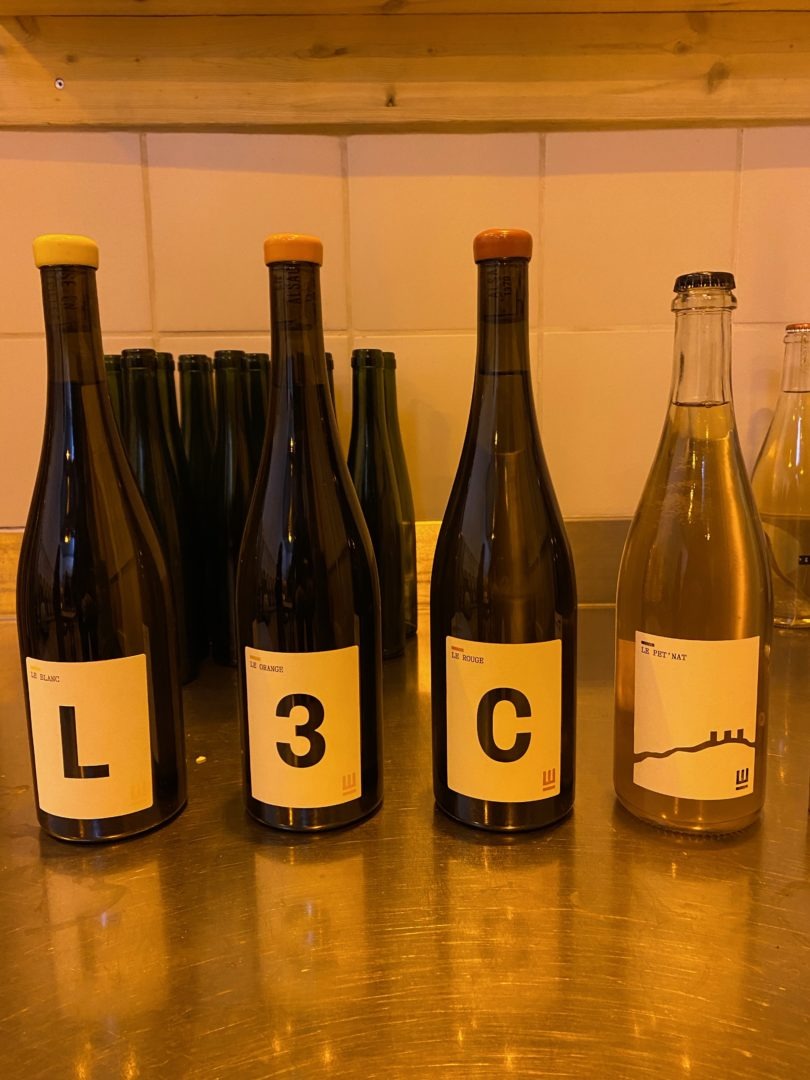
Gérard Blaess – Domaine du Petit Poucet in Marlenheim
Gérard Blaess expanded his micro domain by 50% last year. It is now almost three quarters of a hectare and includes parcelles on the Steinklotz Grand Cru and on the near-bye Wangenberg. With one of the large Steinklotz based domaines recently downsizing, Gérard picked up a few plots on the Grand Cru. As he has to cope with a full time day job away from his vines and his cellar, he now considers himself to be at maximum capacity in his winery. A real thoughtful and focused enthusiast, Gerard has set an example on the Steinklotz with his organic vineyard management during the last six years. His work has been a visual example to a few of the young winemakers taking over their family domains, and the difference is delightfully evident as physical management of the vineyards on the Grand Cru continues to increase. There is also major investment going on with the restoration of stone walls and some terraced areas, coupled with a significant tree planting program. Jean-Marie Bechtold ( a long term biodynamic pioneer) from nearby Kirchheim, has also picked up a parcelle of Pinot Noir on the Steinklotz. To tie that little circle, Gérard started his own conversion to biodynamics this year.
So, as the closest Grand Cru vineyard to the Back_In_Alsace world HQ, the changes in the Steinklotz are extremely pleasing to our “backyard attitude” approach to things. The nombriliste side of our character.
Now back to Mister Blaess – we started our visit with a two hour walk around the Steinklotz, taking in the superb views and appreciating all these changes that are making this place look like a garden, rather than the surface of the moon. Then back to the cellar (garage) to get into some tasting. The two plots on the Wangenberg, which we know well, are old Auxerrois vines and we tasted the 2018, 2019 and 2020. I suppose that provides some concept of terroir with the different vintages from these small plots totalling 28 ares. The plots sit high to the west of the Wangenberg, just under the acacia forest. The location brings cool evenings which helps raise the acidity in the Auxerrois. The 2018 and 2019 were direct press while the 2020 had 50% of the grapes undergoing a 5 day maceration. A lovely series where the wines were alive, tingling with energy and had a tram of agrumes and salinity. As you would expect, the 2020 had more weight and a deeper colour from the maceration. Gérard is one of only two winemakers bottling wine from the Wangenberg and we plan to source and put aside a case of our “local” Auxerrois each year. The 2020 Steinklotz Pinot Gris was another maceration wine, it was dry and croquant with lovely amertures. The 2020 Pinot Noir from the barrique had a deep ruby colour and a definite tea-like tannins and will go on to produce a serious Steinklotz Pinot Noir. We will be back to visit our neighbour this summer.
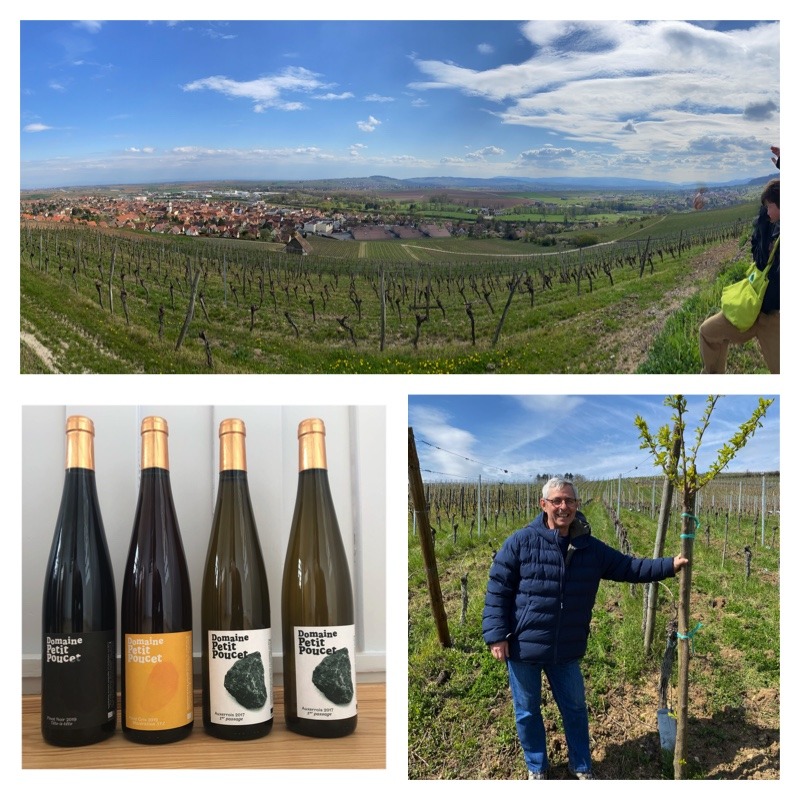
Chez Les Schloegel’s – La Maison Lissner – Wolxheim
Back on the cycle path to Wolxheim and the destination for the morning was La Maison Lissner. The current building with the stunning reception room and the vaulted, underground chai, was completed in 2010. The wine is worked by gravity from the reception of the fruit into the foudres, tanks and barrels and then when ready, into the bottles or into the cool, Lehmann tasting glass. The last time we visited Bruno and Théo Schloegel we spent the morning in the vineyards, this time we never left the building.
Bruno headed off to get to the last of the pruning and Théo and myself headed downstairs to the lines of ancient foudres.
The domaine (la maison) runs to eight hectares and around 30% of the annual production of 25-30,000 bottles goes to export. The vineyards include the village parcelles, several lieux-dites and Riesling, Gewurztraminer and Muscat are grown on the Altenberg de Wolxheim Grand Cru. We got through nine wines in the cellar and then went back to the tasting room for another batch of five. The terroirs around Wolxheim are reputed for providing great salinity and also stunning acidity in the right cuvées. Match that with the total respect for nature in the vineyards that the Lissner’s provide ( more like allow and encourage), then you feel you are in some sort of magical place where grapes are turned into wine. As Bruno said “let things be and don’t cancel them out, let the fruit and the fermentation sort it all out.”
Full domain profile coming in the summer, but for a quick sampling of what we got through. We started with a “village” Auxerrois from calcareous loess soil, which was super delicious, round and with a touch of sweetness that was balanced by the salinity. Then on to a dry Sylvaner that was super croquant, fresh, even a bit spicy and again with a lasting salinity. Then a couple of Pinot Gris’s, rich in ripe fruits, agrumes, smokey, with the maceration cuvée having a delicate ruby, roof tile colour. Followed by the the “village” Riesling with its spicy notes and rich fruits and a nice weight, again with strong salinity. Next up the Altenberg de Wolxheim 2020 Riesling, which was concentrated and intense and a wine that will work out its complexity during many years. A great wine to follow as it moves through stages of development. As Théo said ” this wine comes at you, you have to take a deep breath, think and come back to it.”
We finished in the grand reception room before I hit the cycle path back to world headquarters. The wines that sent me on my way were totally fascinating. A 2014 Muscat from the Altenberg that was ultra dry but with a pure expression of fruit on tasting. The nose was spicy and the bouquet came over like a grains nobles.
Then a 2012 Pinot Gris with tastes of chocolate and smoky coffee, which was raised for 30 months in the foudre and had a delicate oxidative tram. A perfect wine to taste before heading out into the cold and humid day.
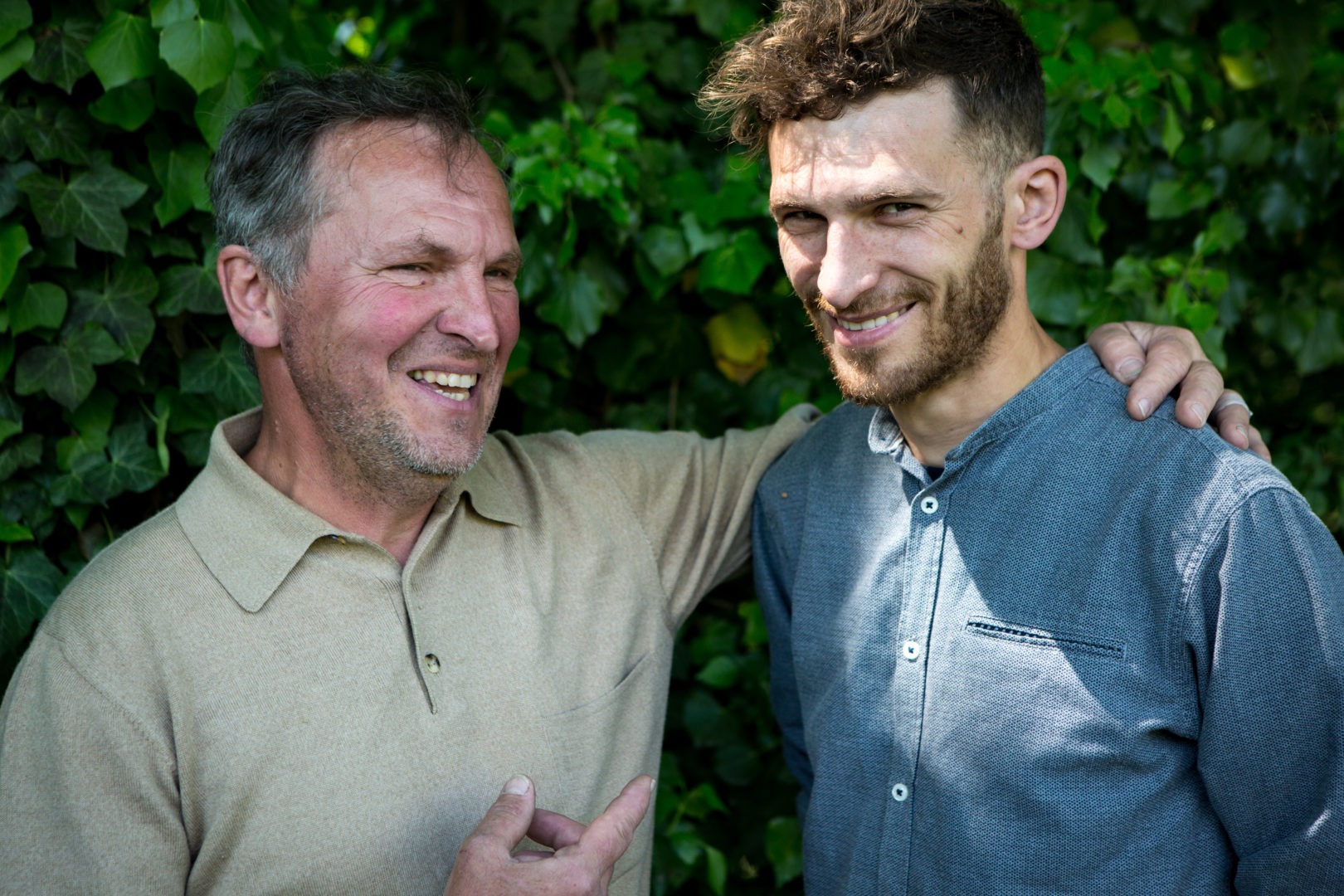

Jean-Pierre Rietsch – Mittelbergheim
Jean-Pierre Rietsch runs his domain from his winery in Mittelbergheim. We have been regular visitors since early 2014 and are always intrigued with the development and initiatives that constantly spring from the vineyards and the cellar. Jean-Pierre has a big reputation for originality and pushing the boundaries with his macerations in particular. And when you are pushing boundaries sometimes people don’t get it, which is such a marker for something special going on. And there are also some people who realise something special is going on, they get on the bus and they cross the boundaries.
Some of these boundaries are so straightforward, like making things simple from the 2015 vintage in naming the litre cuvées just “C’est un Blanc, C’est un Rietsch” and “C’est un Rouge, C’est un Rietsch”. No more faffing around with the cépage/variety on the label. This is what you get, Jean-Pierre Rietsch white and red litres; litres for drinking in restaurants, wine bars and at the dinner table. Signature Rietsch. If you want to know more, much more, it is often on the back label and definitely there on the marvellous web site rietsch
The web site is a work of art and more importantly information. None of the crap around looking after the land, respecting nature and pumping up the cliches of Alsace wine. You get the technical sheet on each wine, you get a chance to work back through past vintages, you get the haunting and mesmeric art of local artist Marie Dréa on the label presentations. You get it as it is. Well, this is Mittelbergheim and sometimes “things are not what they seem …. “.
On looking after the land, Jean-Pierre has four hectares around Mittelbergheim and another three en fermage, that he works on the Stierkopf lieu-dit, to the north at Mutzig. He also participates in another 1.5 hectares close to Mittelbergheim that are worked as market gardens. This is the “rural economy”, this is “village life”, part of the Rietsch set up that goes beyond putting wine into bottles.
We visited Jean-Pierre in April and he rolled out twenty wines to taste (pic bottom left). It was a crisp Spring day and we settled outside on a table looking over the Stein vineyard. Most of what followed will be covered in a domaine profile coming up this summer. But, getting back to boundaries we will touch on a few examples.
Zotzenberg Grand Cru Sylvaner 2017 – three years before bottling, delicate reduction, huge on salinity, clear, round in the mouth, a blast of quince, a run of exotic fruits and wild herbs. What a total treat of a wine.
The Pas a Pas cuvée, step by step. This started off in 2011 and is worked on in odd years, 13, 15, 17 etc. Klevener de Heiligenstein (Savignin Rose) is the grape variety. Half of the wine is bottled and then topped up in these odd years. It starts with complex fruits and a blast of acidity and runs to a very long finish.
Now a favourite for us, the Coquette cuvée. A Riesling/Gewurztraminer (66/34) maceration. Of course every vintage can vary and the 2020 went like this, the Riesling kept as whole grapes and Gewurztraminer pressed juice added. Three weeks of maceration kicked in and the result (before bottling) had an intriguing oxidative side with just a touch of lingering residual sugar. Of course (again) with these varieties, you get this glorious mix of acidity and exotic fruits.
We will stop there as this is just a visit summary. Just a visit summary for a winemaker who is a reference point for Alsace wines.
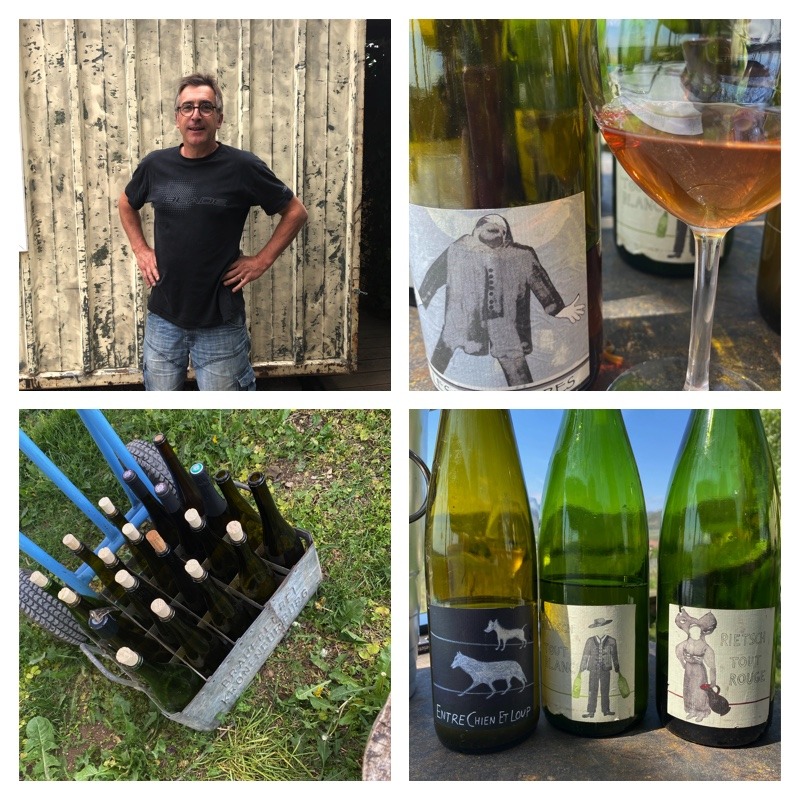

Lucas Rieffel – Mittelbergheim
Leaving the Rietsch winery just above the Stein vineyard, you walk up the lane to the main street, cross the road and go up a few doors and you arrive at the Rieffel winery. If you go down a few doors you arrive at the Kleinknecht winery. If you go past the Rieffel setup and keep walking for three minutes, you arrive at the Rohrer winery. Four winemakers producing natural wines in the same village, in the same street. All four are adherents to the Association Vins Libres d’Alsace (AVLA) which was set up in 2019 and all four will be at the AVLA organised, d’Summer Fascht wine fair in Colmar on the 18-19th July.
Now back to the Lucas Rieffel visit. It’s easy to get distracted in Mittelbergheim……..
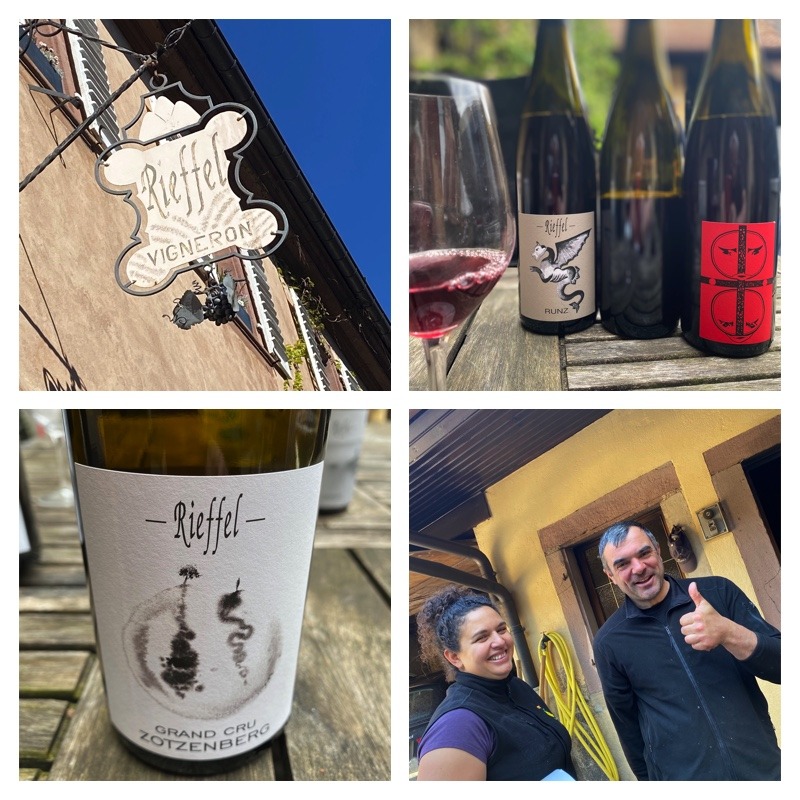

March – Spring in Alsace
Still stuck in the Sierra Foothills in northern California, but heading to Alsace mid month, with the “family” arriving at different times. Gathering of the clan under the current difficult situation.
Cannot wait to get through the Covid quarantine rules and have a wander around Strasbourg and start some winemaker visits. We have a serious list set up.
It will be very much be Back in Alsace, with an attitude Lost in Alsace through March and April. A key configuration we want to keep is “inside looking in, inside looking out and outside looking in.” The best way to keep the finger on the Alsace natural wine pulse.
